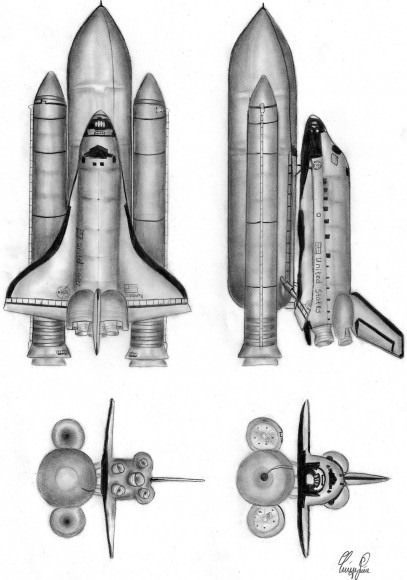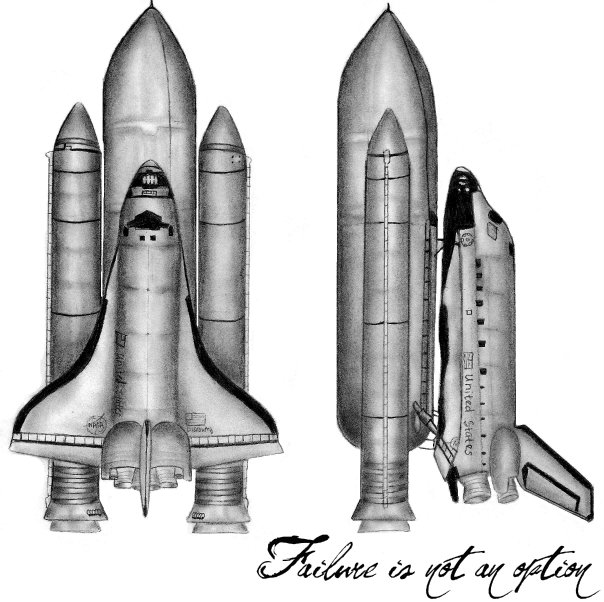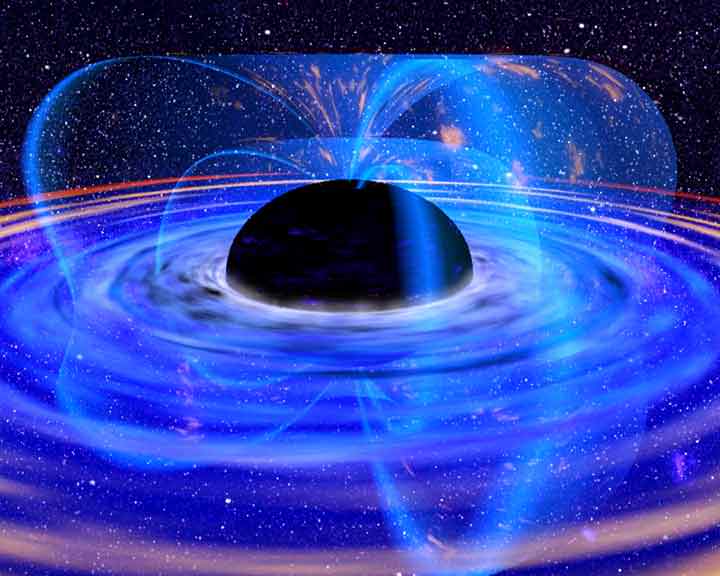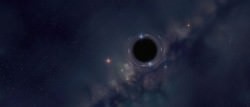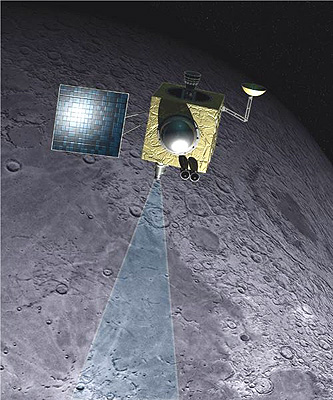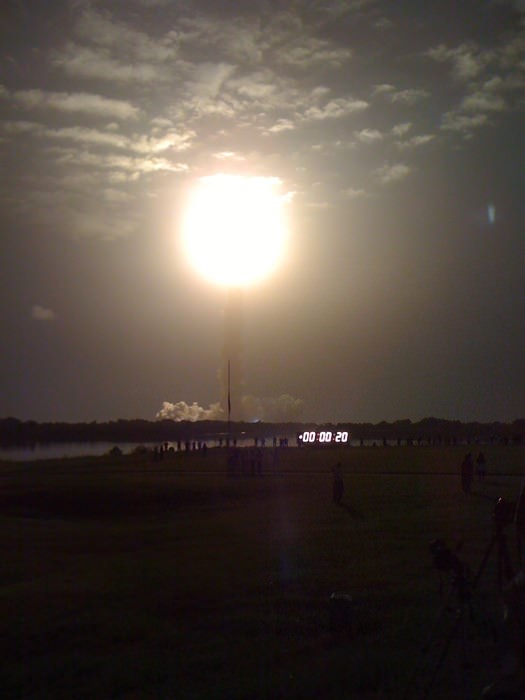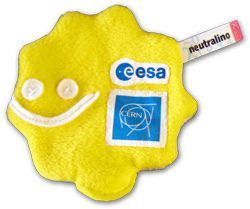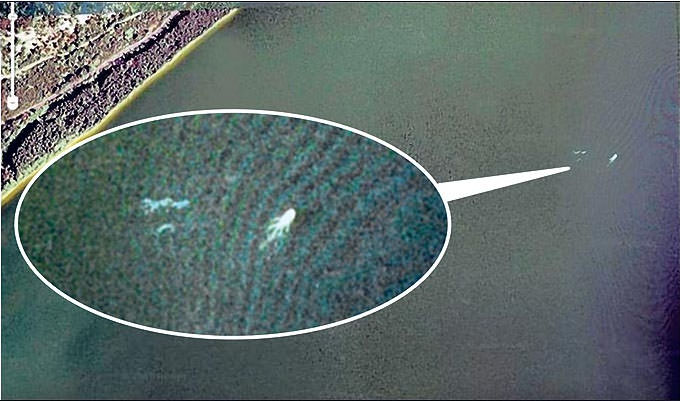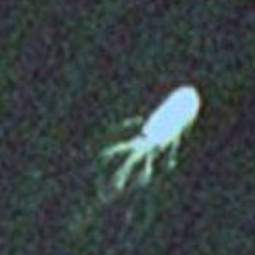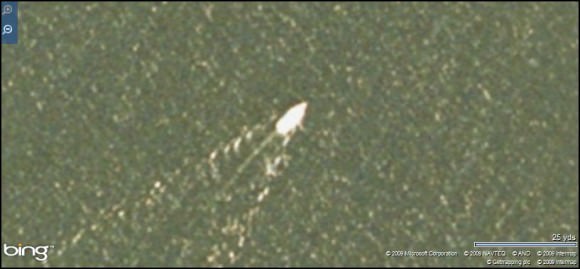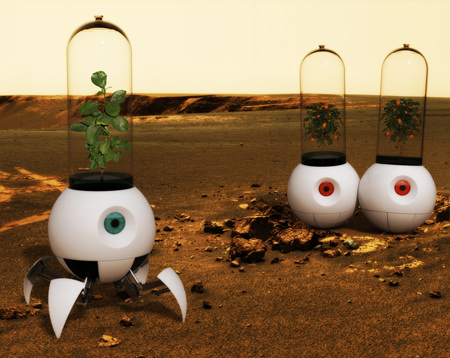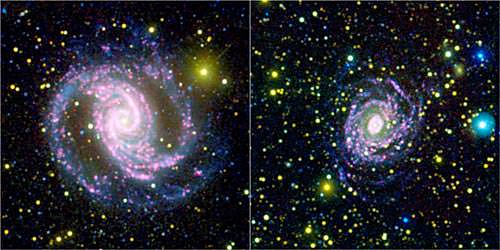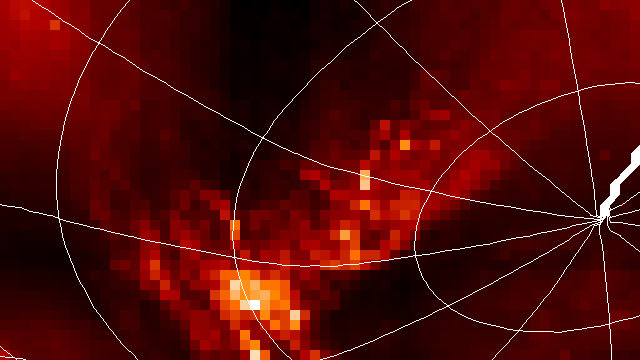Greetings, fellow SkyWatchers! Are you ready for a little lunacy this weekend? Yes, it’s back – but there is no other distant world whose features we can study quite so clearly and as well as the Earth’s companion – the Moon. If it’s been awhile since you turned a telescope or binoculars its way, why not spend an evening or two enjoying some of its features before it becomes overwhelmingly bright? There are other bright objects we often take for granted as well, too… Such as colorful and challenging double stars. If that’s not enough for you – then keep your eyes wide open – because some very cool things are about to happen with Jupiter’s moons! Time to dust off your optics and I’ll see you in the backyard…
Friday, August 28, 2009 – When we begin our observations tonight, we’ll start by having a look at another great binocular or telescope study crater, Archimedes. You’ll find it located in the Imbrium plain north of the Apennine Mountains and west of Autolycus.
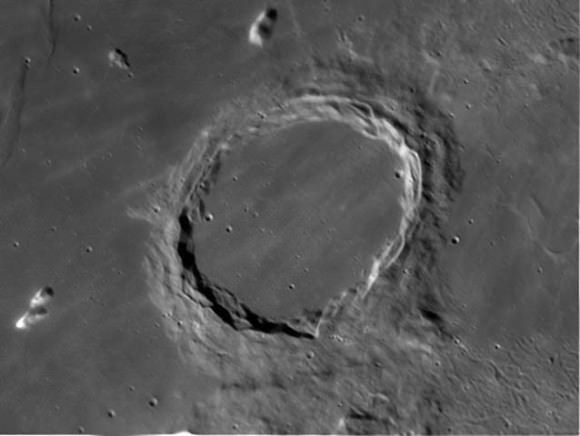
Under this lighting, the bright ring of this Class V walled plain extends 83 kilometers in diameter. Even though it looks to be quite shallow, it still has impressive 2,150-meter-high walls. To its south is a feature not often recognized, the Montes Archimedes. Although this relatively short range is heavily eroded, it still shows across 140 km of lunar topography. Look for a shallow rima that extends southeast across Palus Putredinus toward the Apennines. Mark your challenge notes!
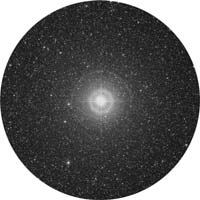 Keep those binoculars handy, as we look toward the Northern Cross, otherwise known as Cygnus the Swan. Start at the Swan’s beak—Albireo—and hold the binoculars very steady. Can you make out two stars where you thought there was one? If so, then you are seeing 3.2-magnitude Albireo’s distant companion. But don’t stop with binoculars; bring out the scope and have another look at Beta Cygni (RA 19 30 45 Dec +27 57 55). Albireo’s brighter star is a warm golden yellow and the fainter is a pristine aqua blue. Many astronomers agree this is the premier pair of colors in the heavens!
Keep those binoculars handy, as we look toward the Northern Cross, otherwise known as Cygnus the Swan. Start at the Swan’s beak—Albireo—and hold the binoculars very steady. Can you make out two stars where you thought there was one? If so, then you are seeing 3.2-magnitude Albireo’s distant companion. But don’t stop with binoculars; bring out the scope and have another look at Beta Cygni (RA 19 30 45 Dec +27 57 55). Albireo’s brighter star is a warm golden yellow and the fainter is a pristine aqua blue. Many astronomers agree this is the premier pair of colors in the heavens!
Saturday, August 29, 2009 – If you stayed out late, or decided to get up early, this morning is a scenic opportunity for binoculars. Just before dawn, look for Mars well risen along the ecliptic plane and aim your optics its way and see what you discover. That’s right! Messier 35 will be about a degree away…
As you start observing this evening, keep an eye on your time for 6:42 UT and watch Jupiter if you live in North America. Believe it or not, Io will partially occult Europa and the two will seem to meld together like a snowman for 13 minutes. And check back later! For at 7:38 UT, its shadow will take a very small bite out of it for approximately 8 minutes!
Our lunar mission for tonight is to move south, past the crater rings of Ptolemaeus, Alphonsus, Arzachel, and Purbach, until we end up at the spectacular crater Walter.
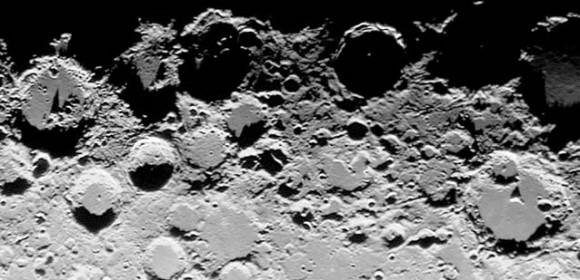
Named for Dutch astronomer Bernhard Walter, this 132- by 140-kilometer-wide lunar feature offers up amazing details at high power. It is worthwhile to take the time to study the differing levels, which drop to a maximum of 4,130 meters below the surface. Multiple interior strikes abound, but the most fascinating of all is the wall crater Nonius. Spanning 70 kilometers, Nonius would also appear to have a double strike of its own—one that’s 2,990 meters deep!
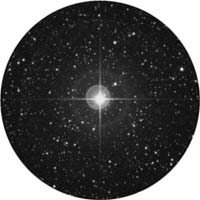 Although it will be tough to locate with the unaided eye thanks to the Moon near Lambda, let’s take a closer look at one of the most unsung stars in this region of sky—Eta Sagittarii (RA 18 17 37 Dec -36 45 42). This M-class giant star will display a wonderful color contrast in binoculars or scopes, showing up as slightly more orange than stars in the surrounding field. Located 149 light-years away, this irregular variable is a source of infrared radiation and is a little larger than our own Sun, yet is 585 times brighter. At around 3 billion years old, Eta has either expended its helium core or just began to fuse carbon and oxygen, creating an unstable star capable of changing its luminosity by about 4%. But have a closer look, for Eta is also a binary system with an 8th magnitude companion!
Although it will be tough to locate with the unaided eye thanks to the Moon near Lambda, let’s take a closer look at one of the most unsung stars in this region of sky—Eta Sagittarii (RA 18 17 37 Dec -36 45 42). This M-class giant star will display a wonderful color contrast in binoculars or scopes, showing up as slightly more orange than stars in the surrounding field. Located 149 light-years away, this irregular variable is a source of infrared radiation and is a little larger than our own Sun, yet is 585 times brighter. At around 3 billion years old, Eta has either expended its helium core or just began to fuse carbon and oxygen, creating an unstable star capable of changing its luminosity by about 4%. But have a closer look, for Eta is also a binary system with an 8th magnitude companion!
Sunday, August 30, 2009 – For observers in eastern North America, keep an eye on the time again tonight and watch Jupiter. At 5:44 UT, Io will graze Ganymede for 7 minutes and at 7:47 UT, its shadow will make a stately 22 minute pass, covering about 1/3 of the small moon in shadow!
Tonight let’s do a little Moon-shadowing of our own as we head to the western shore of Mare Cognitum and look along the terminator for the Montes Riphaeus—the ‘‘Mountains in the Middle of Nowhere.’’ But are they really mountains? Let’s take a look…
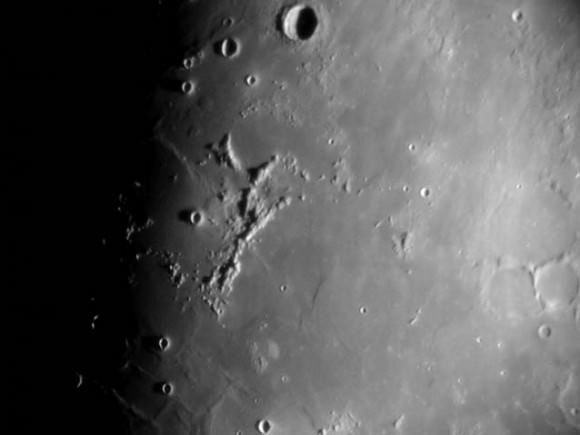
At its widest, this unusual range spans about 38 kilometers and runs for a distance of about 177 kilometers. Less impressive than most lunar mountain ranges, some peaks reach up to 1,250 meters high, making these summits about the same height as our Earthly volcanoes Mounts St. Augustine and Kilauea. While we are considering volcanic activity, consider that these peaks are the only things left of Mare Cognitum’s walls after the lava filled them in. At one time, this area may have included some of the tallest lunar features!
 Tonight let’s have a look at the second brightest star of the Summer Triangle—Altair (RA 19 50 47 Dec +08 52 06). Like Vega, 16-light-year-distant Alpha Aquilae is a Sirius-type star, which is several times the size and mass of our Sun. Such stars burn hotter at the surface (approaching 10,000 Kelvin) and appear much whiter to the eye as a result. An unusual feature of Altair is its exceedingly high speed of rotation, requiring just 6 hours to complete an ‘‘Altairian day’’ at the equator. Because of this, its girth is significantly greater than its height, and gases on the equator move along at the surprising rate of 150 kilometers per second! As you observe Altair telescopically, look for a 10th magnitude companion roughly 3′ to the northwest.
Tonight let’s have a look at the second brightest star of the Summer Triangle—Altair (RA 19 50 47 Dec +08 52 06). Like Vega, 16-light-year-distant Alpha Aquilae is a Sirius-type star, which is several times the size and mass of our Sun. Such stars burn hotter at the surface (approaching 10,000 Kelvin) and appear much whiter to the eye as a result. An unusual feature of Altair is its exceedingly high speed of rotation, requiring just 6 hours to complete an ‘‘Altairian day’’ at the equator. Because of this, its girth is significantly greater than its height, and gases on the equator move along at the surprising rate of 150 kilometers per second! As you observe Altair telescopically, look for a 10th magnitude companion roughly 3′ to the northwest.
 Still more? Then while you’re out this weekend, have a go at the outer planets. While it takes several observations to be sure you’ve capture tiny Pluto by Gamma Cap, more northeastern Neptune is fairly easy and so is Uranus in Pisces. This rough finderchart will help you along the way – although most of these stars won’t be visible thanks to the bright influence of the Moon. So how do you find them? Use primary stars that do show – like Alpha Peg – to begin your search. For Uranus? Try about a handspan southeast, just as Neptune will be roughly two finger widths northeast of Gamma Cap.
Still more? Then while you’re out this weekend, have a go at the outer planets. While it takes several observations to be sure you’ve capture tiny Pluto by Gamma Cap, more northeastern Neptune is fairly easy and so is Uranus in Pisces. This rough finderchart will help you along the way – although most of these stars won’t be visible thanks to the bright influence of the Moon. So how do you find them? Use primary stars that do show – like Alpha Peg – to begin your search. For Uranus? Try about a handspan southeast, just as Neptune will be roughly two finger widths northeast of Gamma Cap.
This week’s awesome photos are (in order of appearance): Archimedes (credit—Wes Higgins), Beta Cygni (credit—Palomar Observatory, courtesy of Caltech), Albategnius to Walter (credit—Alan Chu), Eta Sagittarii (credit—Palomar Observatory, courtesy of Caltech), Montes Riphaeus (credit—Greg Konkel) and Alpha Aquilae: Altair (credit—Palomar Observatory, courtesy of Caltech). We thank you so much!
